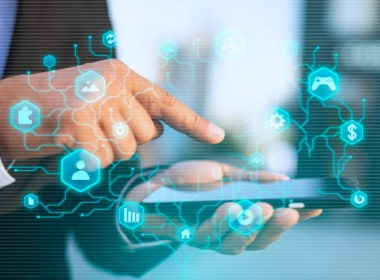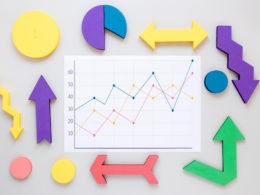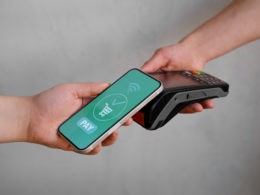Employee recognition has always been a fundamental aspect of a healthy workplace. While the ways we recognize employees have evolved over the years, one thing remains clear: when people feel appreciated, they’re more engaged, productive, and committed to their work. Recognition today goes beyond simple gestures like a “thank you” or a trophy—it reflects a broader cultural shift toward making employees feel genuinely seen, valued, and celebrated for contributions of all sizes. With technology rapidly changing the way we work, it’s no surprise that the future of employee recognition is being shaped by emerging software and tools that promise to make the whole experience more meaningful and impactful.
Let’s take a closer look at where employee recognition is headed and how new technologies are paving the way for more personalized, real-time, and data-driven approaches to appreciating employees.
1. Personalized Recognition: Moving Beyond the Generic
Gone are the days when a simple “thanks for your hard work” in a staff meeting was enough. Now, recognition is all about the individual. Employees are different, and they value different kinds of acknowledgment. Some might feel great about a public shoutout, while others prefer a more private thank-you. Recognizing these differences is becoming a huge priority for companies, and that’s where technology comes in.
Software that tracks employee preferences and performance helps organizations tailor their recognition efforts to fit each person’s unique personality and contributions. For instance, if an employee consistently excels in team collaboration, their recognition might highlight their teamwork in front of peers. Alternatively, if someone is more introverted and prefers one-on-one interactions, their recognition might be a quiet note from a manager. This kind of personalized approach — powered by smart recognition platforms — helps make employees feel like their hard work isn’t just noticed, but truly appreciated for who they are.
2. Real-Time Recognition: Acknowledging Achievements in the Moment
Waiting until an annual review to recognize achievements no longer works in a workplace where things move quickly and priorities shift constantly. Real-time recognition is becoming the norm, and it’s a trend that’s gaining traction fast, especially with the rise of tools like Slack and Microsoft Teams. People want feedback in the moment, and they want to know that their efforts are being noticed right away, not months down the line.
Technology now allows for instant recognition through peer-to-peer platforms, where employees can easily give kudos to one another. Likewise, managers can send quick messages or publicly acknowledge an employee’s accomplishments as soon as they occur. This immediacy helps reinforce positive behaviors right when they happen, keeping employees motivated and engaged on a daily basis. And it’s especially valuable in remote or hybrid work settings, where the lack of face-to-face interaction can sometimes make employees feel disconnected.
Real-time recognition moves away from one-off compliments and becomes a consistent, integrated part of daily workflows and communication. By incorporating it into daily communication, companies can ensure their employees feel valued throughout the year, not just on special occasions.
3. Gamification: Turning Recognition into a Fun Experience
Who says recognition has to be all serious business? Many organizations are now embracing gamification to make the whole process more engaging. In a gamified recognition system, employees can earn points or badges for achieving specific goals, demonstrating company values, or even just helping out a colleague. These points can then be redeemed for rewards, ranging from gift cards to extra time off or even company-wide recognition.
The beauty of gamification is that it creates a sense of friendly competition, which can push employees to strive for excellence, all while having fun in the process. Leaderboards, progress trackers, and rewards systems help keep things interesting and provide employees with clear goals to aim for. It also encourages collaboration, as employees might earn points for working together on projects or helping each other meet shared objectives. This makes recognition not only more fun but also more communal, fostering a sense of team spirit and a shared purpose.
Gamification can be especially effective in engaging younger generations who are familiar with gaming and digital incentives. As it becomes more common, we can expect gamification to be integrated into employee recognition software, providing companies with an easy and interactive way to keep employees motivated and celebrated.
4. AI and Data: Smarter Recognition Through Analytics
The way we recognize employees is becoming increasingly data-driven, thanks to artificial intelligence (AI) and analytics. These technologies can analyze a wealth of data — such as employee performance, feedback from colleagues, or even sentiment analysis from company surveys — and provide valuable insights on how to recognize employees in the most impactful way.
For example, AI can help identify when an employee is consistently going above and beyond but might not be getting the recognition they deserve. It can also suggest the best type of recognition based on the employee’s preferences. Some employees may respond better to private messages, while others might enjoy public shout-outs. AI-driven recognition platforms are designed to take this guesswork out of the equation, using data to suggest the best ways to recognize individuals and teams.
Over time, these systems can learn from employee feedback and performance trends, continuously improving the recognition process. The more data they collect, the more personalized and effective the recognition becomes, making employees feel like the system truly “gets” them.
5. Well-being Recognition: Acknowledging More Than Just Work
Work is just one aspect of an employee’s life, and there’s a growing recognition of the importance of well-being in employee engagement. In recent years, organizations have started to incorporate mental health and well-being into their recognition efforts. Recognizing an employee’s efforts to maintain a healthy work-life balance or take care of their mental health is becoming just as important as acknowledging their professional achievements.
Well-being-focused recognition goes beyond just rewarding hard work. It’s about celebrating employees who are taking care of themselves and supporting the overall well-being of the team. Whether it’s encouraging employees to take a mental health day, providing access to wellness programs, or simply recognizing efforts to keep a positive mindset during challenging times, this type of recognition reflects a more holistic view of employee value.
Technology plays a key role in this by offering tools that allow employees to track their well-being and wellness activities, which can then be tied to recognition. For instance, an employee who regularly participates in mindfulness sessions or fitness challenges might receive recognition not just for their productivity, but for their commitment to maintaining their health. This approach fosters a culture that values work-life balance and acknowledges that well-being is essential to long-term success.
6. Integration with Broader Employee Experience Platforms
The future of employee recognition won’t exist in isolation. As organizations move toward more integrated HR platforms that cover everything from performance management to learning and development, recognition will become a natural part of the overall employee experience. By embedding recognition into broader systems, organizations can create a seamless experience that aligns with employees’ growth, career progression, and personal goals.
For example, an employee who has consistently received recognition for their collaborative efforts might find that their growth opportunities are also linked to teamwork-oriented roles or leadership positions. Recognition systems will become more interconnected with tools that track personal development, learning goals, and career achievements, making the entire employee journey more cohesive and rewarding.
In Conclusion
The future of employee recognition is all about making it more personal, timely, and meaningful. As companies continue to embrace new technologies, they will be able to offer recognition that is more aligned with individual needs, more immediate in its delivery, and more integrated with the overall employee experience. With the rise of AI, gamification, and real-time feedback, we are moving toward a future where recognition is not just an afterthought but an ongoing, impactful part of the workday. It’s an exciting time to be in the world of employee recognition, and those who embrace these changes will undoubtedly create more engaged, loyal, and satisfied teams.












